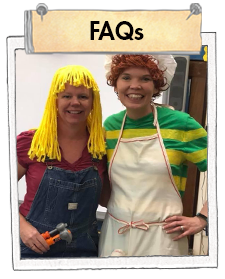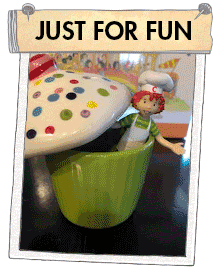|
|
|
|
ISSUE 7 | FEB. 2020
|
In The Superkids Reading Program, guided reading is done in small groups. How you guide reading with the texts should vary depending on the abilities and instructional needs of the children you are working with. Grouping children with similar strengths and weaknesses makes it easier for you to provide them with the instruction they need most.
In this issue, we will investigate forming small groups, mediation techniques for small-group instruction, and tips for scaffolding instruction to meet students’ needs.
|
|
|
 
|
Assessing children’s skills regularly will reveal their strengths and weaknesses and help you make decisions about grouping children with similar abilities for guided reading instruction. It can be helpful to think about grouping students into these three ability groups.
|
Group 1: Needs help all the time
These are your struggling readers, the students who need help with independent reading and activities and require the most teacher support.
|
Group 2: Needs help some of the time
This group includes readers who are considered “on-level.” Most tasks can be completed with little teacher assistance. When new skills are introduced, children in this group may need more help.
|
Group 3: Can do most tasks independently
These students are independent readers and considered “above-level.” Most of the tasks that are assigned to this group can be completed independently.
|
Use the formal assessments that accompany Superkids to inform you of students’ skills throughout the year. Observing children during lessons and reviewing their completed work are also effective ways to assess individual strengths and weaknesses. Try these opportunities for informal assessment during your reading block:
|
|
|
| • |
Performance during Daily Routines |
| • |
Completed Student Book or Word Work Book activities |
| • |
Completed Practice Pages |
| • |
Children’s oral reading and discussion during guided reading lessons |
| • |
Completed writing assignments |
| • |
Performance during Ten-Minute Tuck-In activities |
| • |
Products from Independent Activities
|
|
|
|
After you have determined your reading group members, how will you support each group as they read?
As you know, below-level readers will need a great deal of scaffolding, while advanced readers will need little teacher support. Reading text aloud to students, echo reading, or choral reading are instructional strategies that offer significant support. Paired reading or independent whisper reading requires little teacher mediation. Consider using the following routines with each group.
|
|
|

|
|
Group 1: Needs help all the time
| 1. |
Allow opportunity for the group to hear text read aloud.
|
| 2. |
Ask comprehension questions.
|
| 3. |
Select a section of text.
|
| 4. |
Provide instruction and practice with difficult words and irregular words from that section.
|
| 5. |
Have the group follow as you read one or two sentences from the section, followed by choral reading those sentences with you. Lastly, call on individuals to read sentences, providing decoding assistance as needed.
|
|
Group 2: Needs help some of the time
| 1. |
Have children take turns reading a sentence, paragraph, or page aloud. Assist with decoding as needed.
|
| 2. |
Read the text aloud to the group before discussing it so children can hear the sentences read fluently without the stops and starts of different readers.
|
| 3. |
Ask the comprehension questions from the section of text that was read.
|
| 4. |
Continue with the next section of text.
|
|
Group 3: Can do most tasks independently
| 1. |
Allow children to read text independently before meeting with you in the group.
|
| 2. |
During group time, have children take turns reading a sentence, paragraph, or page aloud.
|
| 3. |
Encourage children to read smoothly and with expression, modeling as needed.
|
| 4. |
Pause after each page to discuss comprehension questions.
|
|
|
|
|
  |
|
I teach kindergarten. Do I really need to read Superkids text in small groups?
At the beginning of the year, when students are working through the initial Meet the Superkids units, it is okay to work whole-group. This way you have time to identify children’s specific strengths and weaknesses and get them used to working independently. The Library Books after Unit 6 have minimal text, so the time you spend with each group will be brief. Using these books with small groups introduces your students to group reading procedures. In Superkids’ Club, students read more connected text in the Student Book and Library Books. These lessons are designed to be taught in small, skill-based groups.
|
|
|
How do I help a child who “gets stuck” on a word when reading?
Do not tell her the word. Instead, tell her that she has the tools to decode the word. Have her look carefully at the letters and spelling patterns and remind her of any rules that govern the sounds the letters make. Then help her blend the sounds to pronounce the word.
How can I help children who are struggling with comprehension?
Often struggling readers have difficulty comprehending what they read because they are not yet decoding words smoothly. Work on decoding skills with these children. You can use the Big Book of Blending or Big Book of Decoding to give extra practice. During guided reading, follow the suggestions for group 1 above. As needed, explain more of the vocabulary in the story and use additional think-alouds and discussion questions to help children understand what they’re reading.
How can I help children who are struggling with fluency?
Provide more modeling and additional practice for children who are struggling with fluency. Work with a child individually, if possible. Read aloud a selected passage several times and then have the child read the passage aloud with you chorally. Have the child practice on his own. When he thinks he can read the passage fluently, have him read aloud to you. You can also have the child listen to and practice reading along with the interactive text on Superkids Online Fun. Research shows that repeated oral reading develops fluency, especially if the oral reading is modeled for the child. Rereading the same passage with a teacher, volunteer, or partner is extremely helpful for halting readers. See the fluency section in the Superkids Skill-Building Book for more information and suggestions for developing children’s fluency.
|
|

This cute idea was shared on our Facebook page last year: a pesky leprechaun had some fun with the Superkids Bendable Figures around St. Patrick’s Day.
Each day, students found one Superkid in a bit of a pickle. Cass was caught in a cupcake, Frits was framed, Doc was stuck in dough, Golly was swimming in glitter, Hot Rod made a mess with the hole punch, Lily hid in the Lincoln Logs, and Sal was stuck in the sink. How fun!
Will you plan a little mischief of your own next month?
|
|
|

|


|
|
Looking for a fun activity for next month? We’ve designed the ultimate Superkids tournament. Run your own classroom’s tournament or follow along on our Facebook page for inspiration.
Beginning in mid-March, we’ll post a head-to-head poll matching characters in a scenario featuring a favorite sport or activity of the Superkids. Stay tuned to the page to vote and see who wins this year.
|
|
|
|
|

|
|
|
|
|